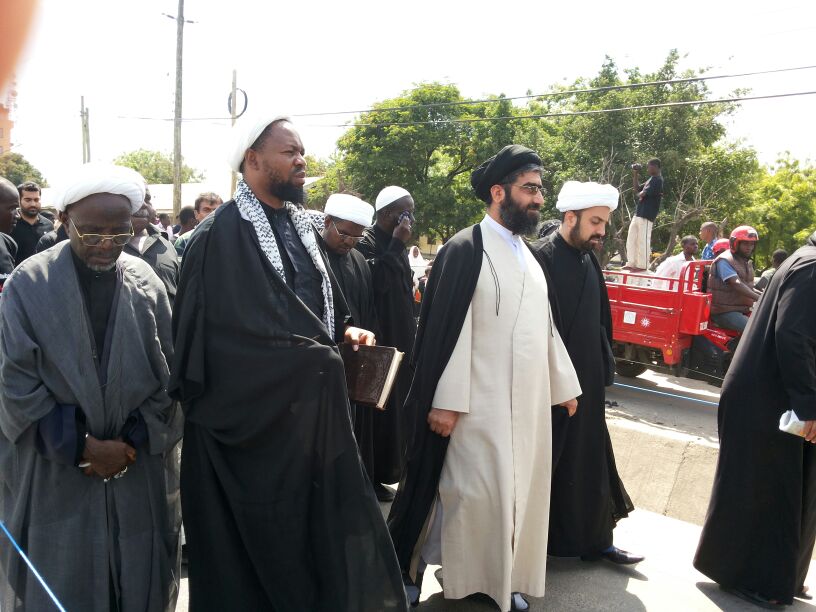The Significance of Imam Husain’s Martyrdom

We owe it to our children and youth born and being raised around the world, that we tell them the story of one of the greatest sacrifices in the history of mankind and the lessons learned from it.
Muhurram, the first month of the Islamic Calendar, which marks the concept of emigration (Hijra) in the cause of Allah (SWT) is also sacred for many other reasons. It was the tenth of this month that Prophet Noah (P) sailed his arc, and it was this day that Prophet Moses (P) led Israelites to the exodus from Egypt. While the second Imam of the Muslim Ummah decided to leave his worldly material and sacrifice his soul purposely to save Islam.
Immediate outcome of Imam Husain’s actions: Muslims and non-Muslims alike have acknowledged that Imam Husain saved Islam from destruction by sacrificing his life. Yazid had been successful in winning over the allegiance of the great majority of Muslims, and the rest of the Muslim world was in a state of moral slumber. The principles of Islam were being plundered, the Sunnah of the Holy Prophet was being tampered with, and phony traditions were being concocted to justify the rule of Yazid. It was the singular sacrifice of Imam Husain and his faithful followers that shook the Islamic world out of its slumber. The Muslims were forced to ask themselves why the beloved grandson of the Holy Prophet had been murdered so brutally. It then dawned upon the people what the true nature of Yazid and his supporters was.
Long term outcome of Imam Husain’s actions: Imam Husain, by challenging Yazid and in the process laying down his life, changed the world and re-shaped human destiny forever. Yazid, and indeed all future despots, were put on notice that they would not be tolerated, and that truth and justice would be upheld and would ultimately succeed, regardless of the costs. The Iranian revolution that uprooted and overthrew an unjust government, and the liberation of Lebanon from foreign occupation are two of the more recent exemplars of these principles laid down by Imam Husain.
Imam Husain’s Philosophy:
Professor Syed Jafar Raza Bilgirami beautifully describes Imam Husain’s philosophy. He states that at Karbala, Imam Husain came to rebuild a system of life. He gave a practical embodiment to the rational concept of justice. He successfully placed the spirit (savage, war-making qualities in man) and the appetite (greed for material things and lust for power) under the command of reason (‘Aql). In Karbala, he formulated a new code of life to safeguard the peace and security of human society for all times to come.
Imam Husain’s Foresight and Planning for the Battle of Karbala:
Imam Husain chose not to flee or hide from Yazid, because that would not have exposed Yazid’s corruption of Islam and would have served to legitimize his unjust rule. He knew that by rejecting Yazid’s demands, he would most likely be killed. However, he also did not want to die like any other martyr. He wanted his death to serve as a starting point for a revolution that would strengthen justice and oppose tyranny for all times to come. This type of stance needed planning and wisdom. As pointed out by scholars, Imam Husain’s planning encompassed three factors:
1. The choice of location;
2. The choice of companions; and,
3. Foolproof arrangements for passing on the event to the annals of history.
The Choice of Location:
Imam Husain chose not to stay in Mecca because he did not want his blood to desecrate the Holy Precincts. Besides, if he were to be killed by hired assassins, then the killers’ motives would not be clear and his death would fade away on the pages of history. So he chose to travel to Iraq (the den of the tyrant himself), where his mission would receive the maximum publicity, and where Yazid’s evil would be best exposed. The events of history proved that Imam Husain was right.
The Choice of Companions:
Hujjatul-Islam Maulana Ali Naqvi has written that in Karbala, the largest number of true Muslims gathered in the entire history of Islam. Imam Husain was not seeking the best fighters, since his goal was not to fight to win a physical war. He was looking for men of principle, true Muslims, firm and patient, who would go through the utmost hardships successfully.
His companions included men of different tribes, coming from different parts of Arabia and beyond. They included, among others, an elderly companion of the Holy Prophet, some liberated slaves, and a young newlywed Christian couple. The age of his supporters ranged from six months to a ripe old age of over 90.
The heterogeneity of Imam Husain’s supporting group indicates that he did not want the confrontation with Yazid to be misrepresented as a struggle between two clans, or a campaign for gaining power.
Preserving His Sacrifice in the Annals of History:
Imam Husain took women, children, and all of his family members with him. This strategy ensured that after his death, his message would be spread through his family members, and that Yazid would not be able to suppress the truth or falsify Imam Husain’s motives. History proves that it was a brilliant move. His sister Zainab (A.S.), through her scholarly and bold speeches, and with no fear of the tyrant Yazid, eloquently proclaimed the truth and exposed the falsehood of Yazid in his own court. He was speechless and humiliated before her. His court was full of dignitaries, both local and from other nation-states, and his own supporters. They were shocked to hear the truth put forth so forcefully, and many were brought to tears. The same scene was repeated in the bazaars and marketplaces of the country, all along the travel route of the surviving captives. Husain had laid the foundation of the revolution with his blood. His sister Zainab stirred the revolution with her oratory. That revolution changed the world forever.

